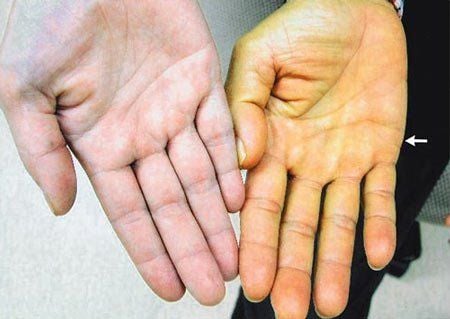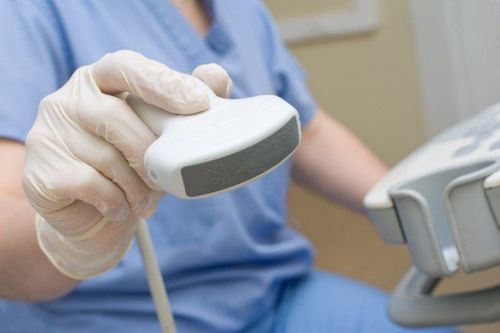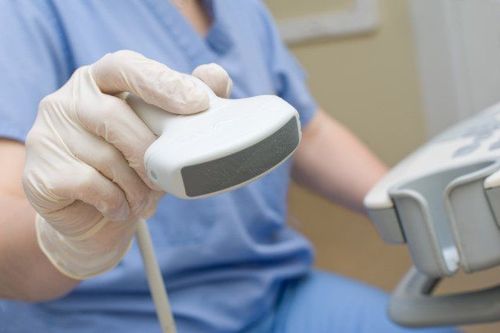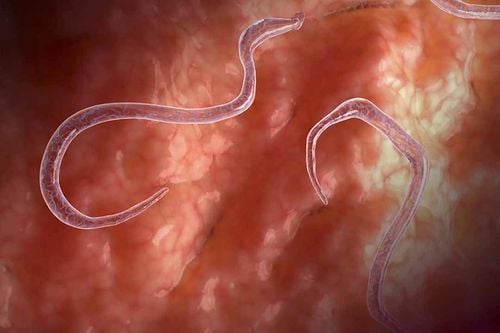This is an automatically translated article.
The article is professionally consulted by Master, Doctor Tong Diu Huong - Radiographer - Department of Diagnostic Imaging - Vinmec Nha Trang International General Hospital.Biliary ultrasound is one of the techniques often prescribed by doctors to detect some unusual problems in diseases related to the liver and bile.
1. Warning signs you need to check your bile ducts urgently
Through the hepatobiliary system, you can completely identify the disease through some of the following signals:
If your body has an unhealthy gallbladder, it will give you a lot of different clinical signals . Often these signs can be one or more of the following general symptoms:
Person has jaundice for 2 weeks or more; especially for children, if the baby has gone through a period of physiological jaundice but still has signs of severe jaundice, you should give your baby an ultrasound of the biliary tract in time.

If you or your children are eating and living healthy but the stools are discolored for a long time, then there is a high chance that the bile ducts are blocked or the gallbladder has some disease. The more severe the disease, the more obvious the discoloration. Unusually dark urine. The liver is enlarged and hard, palpable. In children, if there are signs of malnutrition, growth retardation or severe anemia, you should also give your baby an ultrasound and check the biliary tract soon. This can also be an indirect signal that there is a problem with the security. In addition, there are some other symptoms such as bleeding from the skin due to vitamin K intolerance or liver failure, ascites or severe edema,... These symptoms may not be related signs, though. directly related to gallbladder health but should also be taken into account.
2. What preparation is required before cholangiopancreatography?
The procedure of biliary ultrasound is not too complicated, so before this procedure you do not need to prepare too much.2.1 For adults
Before performing gallbladder ultrasound all patients should fast for at least 8 hours before. This is why most doctors schedule a biliary ultrasound for their patients in the morning. After a long period of fasting, the gallbladder will maintain its normal size. Avoiding the patient's overeating leads to the gallbladder shrinking, making it difficult to identify small or hidden lesions. In case you have missed eating and drinking, you can still discuss more with your doctor. You do not necessarily have to cancel your ultrasound schedule, but if within allowable limits, the doctor will still conduct an ultrasound to help you normally, but the visit time may be longer than usual.
2.2 For children
When taking your baby for an ultrasound, parents should accompany them to support the doctor and also let the baby fast before that. Because the baby's condition is different from that of adults, the fasting time may not be as long as 8 hours, but should at least avoid eating for 3 hours or more.

3. Procedure for performing biliary ultrasound
3.1 In the supine position
Due to the relatively special location of the gallbladder, the ultrasound procedure also involves more positions than ultrasound of other organs. Usually the patient will be instructed by the doctor to lie on their back or slightly to the left. At this time, the doctor will use the scanning head to examine the entire lower ribs.
Sometimes the doctor may ask the patient to move to a sitting position for a transcostal ultrasound.
3.2 In the side-lying position
Usually, biliary ultrasound works best when the patient is lying on his or her side. You will be instructed by your doctor to lie on your side and use the ultrasound probe to scan the mid-axillary line on a flat surface. Ultrasound with this position will avoid the air bubbles present in the intestinal tract affecting the image analysis of doctors. The side-lying position also avoids the echoes of the gallbladder located in a shallower-than-normal position. Especially if you are at risk for gallstones, an ultrasound in the prone position is even more necessary. The condition as well as the response of the stone is most clearly shown.
4. Pathology detected by ultrasound of the biliary tract

4.1 Gallstones
The stone on sonography is an echogenic arc with a characteristic posterior shadow. Ultrasound diagnosis of gallstones is not limited to simply the presence or absence of stones, but must also determine the number and size of stones. Large stones can pose a problem of percutaneous stone removal by laparoscopic surgery, which is the method currently being applied commonly. Small stones have a risk of getting stuck causing acute cholecystitis.
4.2 Primary bile duct stones
Primary biliary stones are often the cause of cholestasis, which can cause cholangitis or pancreatitis.
If gallstones are associated with primary biliary stones, laparoscopic cholecystectomy is not indicated. Therefore, it is necessary to examine the main biliary system before cholecystectomy, if ultrasound is difficult to identify, other diagnostic methods should be applied (especially endoscopic retrograde contrast cholangiography). .
4.3 Gallstones in the liver
Intrahepatic cholelithiasis often presents with mild cholestasis and recurrent infections.
The most common cause is related to parasitic stones, caused by bacteria in the digestive tract. In addition, it may be related to biliary tract disease (abnormal cystic biliary dilatation, cholangitis) and to the consequences of chronic cholestasis (secondary biliary cirrhosis).
Ultrasound shows where the stones are located in the liver and the number of stones is less or more, to guide treatment: lobectomy if the stone is mainly in one lobe, extracorporeal lithotripsy if the stone is located near the navel liver, lithotripsy in the body through the skin if the stone is scattered throughout the lobes...
4.4 Biliary worms
Biliary worms are common diseases, especially in children. Clinical manifestations are acute right lower quadrant abdominal pain, vomiting.
S
Please dial HOTLINE for more information or register for an appointment HERE. Download MyVinmec app to make appointments faster and to manage your bookings easily.














